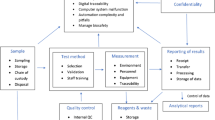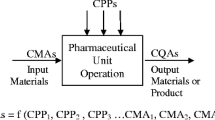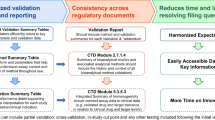Abstract
A simulation is described that evaluates the impacts of altering bio-manufacturing processes. Modifications designed to improve production levels, times and costs were assessed, including increasing feed volumes/titres, replacing initial downstream stages with packed or expanded bed affinity steps and removing ion exchange steps. Options were evaluated for manufactured product mass, COG, batch times and development costs and timescales. Metrics were combined using multi-attribute-decision-making techniques generating a single assessment metric for each option. The utility of this approach was illustrated by application to an FDA-approved process manufacturing rattlesnake anti-venom (Protherics U.K.). Currently, ovine serum containing anti-venom IgG is purified by precipitation/centrifugation, prior to antibody proteolysis by papain. An ion exchanger removes FC, before affinity chromatography yields the final anti-venom. An expanded bed affinity column operating with an 80% higher IgG titre, 66% higher feed volume and without the ion exchanger delivered the best multi-attribute-decision-making value, potentially providing the most desirable alternative.








Similar content being viewed by others
Abbreviations
- M A :
-
Actual product mass (g FAB)
- M 0 :
-
Lowest product mass set to represent the zero bound in normalisation (g FAB)
- M 1 :
-
Highest product mass set to represent the one bound in normalisation (g FAB)
- N i :
-
Normalised value of the ith performance metric (–)
- OR:
-
Overall Rank (–)
- w i :
-
Weighting of the ith performance metric (–)
References
Titchener-Hooker NJ, Zhou Y, Hoare M, Dunnill P (2001) Biopharmaceutical process development: Part II. Methods of reducing development time. Biopharm Eur 13:68–74
Karri S, Davies E, Titchener-Hooker N, Washbrook J (2001) Biopharmaceutical process development: Part III. A framework to assist decision making. Biopharm Eur 13:76–82
Farid SS, Washbrook J, Titchener-Hooker NJ (2005) Decision-support tool for assessing biomanufacturing strategies under uncertainty: stainless steel versus disposable equipment for clinical trial material preparation. Biotechnol Prog 21:486–497
Lim AC, Zhou Y, Washbrook J, Sinclair A, Fish B, Francis R, Titchener-Hooker NJ, Farid SS (2005) Application of a decision-support tool to assess pooling strategies in perfusion culture processes under uncertainty. Biotechnol Prog 21:1231–1242
Zhou YH, Titchener-Hooker NJ (1999) Simulation and optimisation of integrated bioprocesses: a case study. J Chem Technol Biotechnol 74:289–292
Zhou YH, Titchener-Hooker NJ (1999) Visualising integrated bioprocess designs through, “windows of operation.” Biotechnol Bioeng 65:550–557
Groep ME, Gregory ME, Kershenbaum LS, Bogle IDL (2000) Performance modelling and simulation of biochemical process sequences with interacting unit operations. Biotechnol Bioeng 67:300–311
Li R, Townsend CA (2006) Rational strain improvement for enhanced clavulanic acid production by genetic engineering of the glycolytic pathway in Streptomyces clavuligerus. Metab Eng 8:240–252
Lowe CR, Lowe AR, Gupta G (2001) New developments in affinity chromatography with potential application in the production of biopharmaceuticals. J Biochem Biophys Methods 49:561–574
Chase HA (1998) The use of affinity adsorbents in expanded bed adsorption. J Mol Recognit 11:217–221
González Y, Ibarra N, Gómez H, González M, Dorta L, Padilla S, Valdés R (2003) Expanded bed adsorption processing of mammalian cell culture fluid: comparison with packed bed affinity chromatography. J Chromatogr B 784:183–187
Lim AC, Zhou Y, Washbrook J, Titchener-Hooker NJ, Farid S (2004) A decisional-support tool to model the impact of regulatory compliance activities in the biomanufacturing industry. Comput Chem Eng 28:727–735
Mustafa MA, Washbrook J, Lim AC, Zhou Y, Titchener-Hooker NJ, Morton P, Berezenko S, Farid SS (2004) A software tool to assist business-process decision-making in the biopharmaceutical industry. Biotechnol Prog 20:1096–1102 [Correction: Biotechnol Prog 21:320 (2005)]
Harrison RG, Todd PW, Rudge SR, Petrides DP (2003) Bioprocess design. In: Bioseparations science and engineering. Oxford University Press, New York, pp 319–372
Novais JL, Titchener-Hooker NJ, Hoare M (2001) Economic comparison between conventional and disposables-based technology for the production of biopharmaceuticals. Biotechnol Bioeng 75:143–153
Farid SS, Washbrook J, Titchener-Hooker NJ (2005) Combining multiple quantitative and qualitative goals when assessing biomanufacturing strategies under uncertainty. Biotechnol Prog 21:1183–1191
Boyer LV, Seifert SA, Cain JS (2001) Recurrence phenomena after immunoglobulin therapy for snake envenomations: Part 2. Guidelines for clinical management with crotaline FAB antivenom. Ann Emerg Med 37:196–201
Neal G, Christie J, Keshavarz-Moore E, Ayazi Shamlou P (2003) Ultra scale-down approach for the prediction of full-scale recovery of ovine polyclonal immunoglobulins used in the manufacture of snake venom-specific Fab fragment. Biotechnol Bioeng 81:149–157
Neal G, Francis R, Ayazi Shamlou P, Keshavarz-Moore E (2004) Separation of immunoglobulin G precipitate from contaminating proteins using microfiltration. Biotechnol Appl Biochem 39:241–248
Newcombe AR, Cresswell C, Davies S, Pearce F, O’Donovan K, Francis R (2006) Evaluation of a biosensor assay to quantify polyclonal IgG in ovine serum used for the production of biotherapeutic antibody fragments. Proc Biochem 41:842–847
Newcombe AR, Cresswell C, Davies S, Watson K, Harris G, O’Donovan K, Francis R (2005) Optimised affinity purification of polyclonal antibodies from hyper immunised ovine serum using a synthetic Protein A adsorbent, MAbsorbent® A2P. J Chromatogr B 814:209–215
Tejeda-Mansir A, Espinoza R, Montesinos RM, Guzman R (1997) Modelling regeneration effects on protein A affinity chromatography. Bioproc Eng 17:39–44
Huse K, Böhme H-J, Scholz GH (2002) Review article: Purification of antibodies by affinity chromatography. J Biochem Biophys Methods 51:217–231
Thillaivinayagalingam P, O’Donovan K, Newcombe AR, Keshavarz-Moore E (2006) Characterisation of an industrial affinity process used in the manufacturing of digoxin-specific polyclonal Fab fragments. J Chromatogr B (in press)
Acknowledgements
The support of the Engineering and Physical Sciences Research Council and Protherics U.K. Limited is acknowledged gratefully. The advice of Dr. Suzanne Farid (UCL) is acknowledged gratefully.
Author information
Authors and Affiliations
Corresponding author
Rights and permissions
About this article
Cite this article
Chhatre, S., Francis, R., O’Donovan, K. et al. A decision-support model for evaluating changes in biopharmaceutical manufacturing processes. Bioprocess Biosyst Eng 30, 1–11 (2007). https://doi.org/10.1007/s00449-006-0086-8
Received:
Accepted:
Published:
Issue Date:
DOI: https://doi.org/10.1007/s00449-006-0086-8




